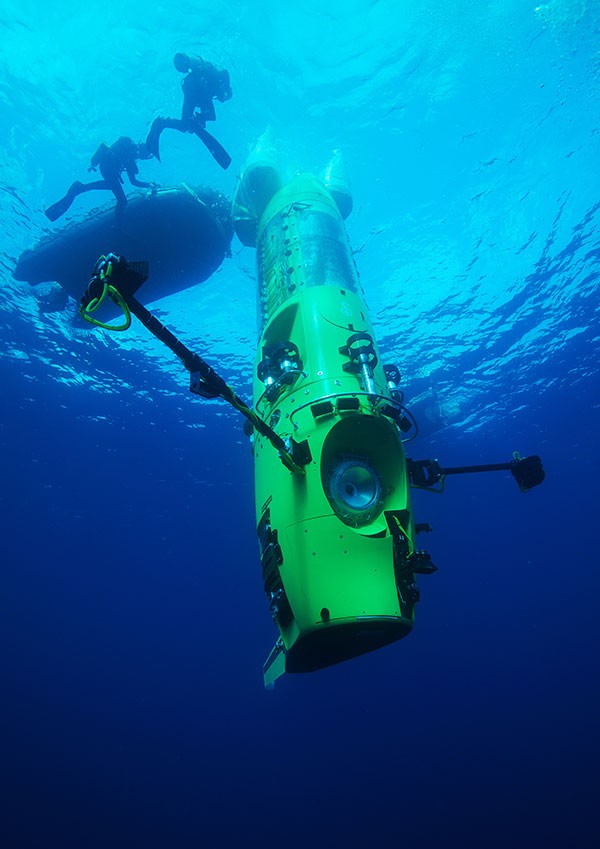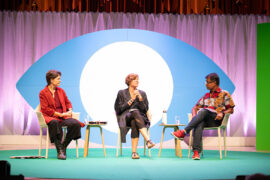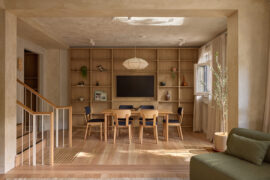Dr Brandon Gien is an advocate for design, the kind of design that is transformative. Through the Good Design Awards, which celebrates 60 years this year, he’s able to champion its life-changing effects.
The Good Design Awards Australia is celebrating 60 years. Diverse in the design it encompasses, one thing has been a constant, that design has the power to change and enhance people’s lives. And Australia needs to embrace its ability to problem solve through design. We talk to Dr Brandon Gien, the founder and CEO of Good Design Australia.
Brandon Gien: There has been a massive shift in the way business now understands what design is and why they need it. Over the last 25 years, I’ve witnessed the word ‘design’ change significantly. ‘Design thinking’ as a term, has been a valuable advertisement for promoting the value and commercial importance of design to business. Companies such as Apple have also been a great corporate advertisement for how investment in professional design can reap rewards – it’s no secret that one of the most valuable companies in the world positions design at its very core.
So yes, the appetite for design is growing and only getting hungrier. We are seeing government now understanding that they also need good design – in the way they design services and policies for their end users i.e. us!

Kjell Grant‘s Montreal chair setting.
The really exciting part is to see design being applied to the really big, hairy and complex problems facing society and to a larger degree, our world. How do we use design to help get homeless people off the street? How do we re-design our energy market? How do we design a better, more inclusive society? These are all the big questions fuelling the need and appetite for Design (with a capital D).
While design will always be there to serve a consumer-driven market and fuel our needs for better products, services and beautiful architecture and experiences – the application of design and design-led innovation towards these bigger issues is what will continue to grow the design industry and also attract the recognition it deserves.
The next frontier is applying the practice of design and design thinking methods to bigger, more complex challenges. Design as a ‘way of thinking’, as a ‘way of solving problems’ – that’s where its all at. Design has moved from being applied to a product/artefact to service, a space or place or experience to now being applied to bigger, more ‘meta’ problems.
Australians, in particular, are brilliant at solving problems both big and small. I’ve seen thousands of products come through the Awards over the years that are all, in some way shape or form, solving a problem or meeting a user-need or demand. The next frontier will be to leverage design as a way of not only doing business but as a way of seeing the world and solving its many myriad of complex challenges.
It’s already happening. We’re seeing government services now being entered into the Good Design Awards, groundbreaking projects such as the incredible Seabin – a device that sucks plastic out of the ocean, hearing aids specifically designed for the ageing population, battery stations from Tesla – all directed towards ‘designing’ a better, safer, cleaner and more sustainable future.
That’s like trying to pick your favourite child. I’ve seen thousands of amazing projects over the last 22 years since running the Good Design Awards. Every year has standouts. I’ll never forget the Deepsea Challenger, designed by Hollywood Director, James Cameron (2012), the groundbreaking Cochlear Nucleus 24 Ear Implant (2000), Flow Hive – a revolutionary beehive design that delivers honey on tap (2016), the Tesla Model S sedan – best car I’ve ever driven (2015). The humble pedestrian pushbutton, a simply brilliant piece of industrial design that sits on every street corner across Australia – don’t ask me to pick, I love them all.

The DeepSea Challenger Research Submersible was co-designed by film director and oceans explorer James Cameron and awarded the Good Design Award of the Year in 2012.
Designers, engineers, scientists, architects, business leaders, government bureaucrats – all need to work together by adopting a design-led approach – that’s utopia.
When we arrive at a point where all these players see design as a strategic tool and they understand that if applied in the right way, it can have a profound positive impact on our quality of life – that’s where we need to get to. That’s what I aspire to, its what gets me out of bed every day.
There is so much happening overseas in this area and mounting evidence and case studies that demonstrate how design is having a positive impact on our lives. New Zealand just released a report that put a value on design’s contribution to its GPD – approximately NZ$10.1b. That’s bigger than their agricultural industry.
Imagine what Australia’s design sector contributes to our GDP? We need to get serious about design and its role in helping business but also in the impact it has to create better outcomes for society and our environment.
If we can get this to happen, and it’s already happening, then we stand a chance of actually designing a better future and a better world – rather than it happening by accident.
Read about our look back on the Good Design Awards’ 60th.
Want more stories like this straight to your inbox? Sign up for our newsletter.
INDESIGN is on instagram
Follow @indesignlive
A searchable and comprehensive guide for specifying leading products and their suppliers
Keep up to date with the latest and greatest from our industry BFF's!

A curated exhibition in Frederiksstaden captures the spirit of Australian design

Welcomed to the Australian design scene in 2024, Kokuyo is set to redefine collaboration, bringing its unique blend of colour and function to individuals and corporations, designed to be used Any Way!
The new range features slabs with warm, earthy palettes that lend a sense of organic luxury to every space.

For Aidan Mawhinney, the secret ingredient to Living Edge’s success “comes down to people, product and place.” As the brand celebrates a significant 25-year milestone, it’s that commitment to authentic, sustainable design – and the people behind it all – that continues to anchor its legacy.

Steelcase walked away from the 60th annual Good Design Awards with two pieces of gold – for its Navi TeamIsland and Series 1 seating.

Last week saw hundreds of products across a wide range of categories awarded in the annual Good Design Awards. Here we highlight the projects and products that remain close to our heart – architecture, interiors and furniture.
The internet never sleeps! Here's the stuff you might have missed

At the World Design Congress in London, a simple idea threaded through two dense days: design is not an island. It moves inside wider systems of economics, policy, finance and ecology.

Merging residential living with the retail experience, the latest project from In Addition breathes new life into shopping for the home.